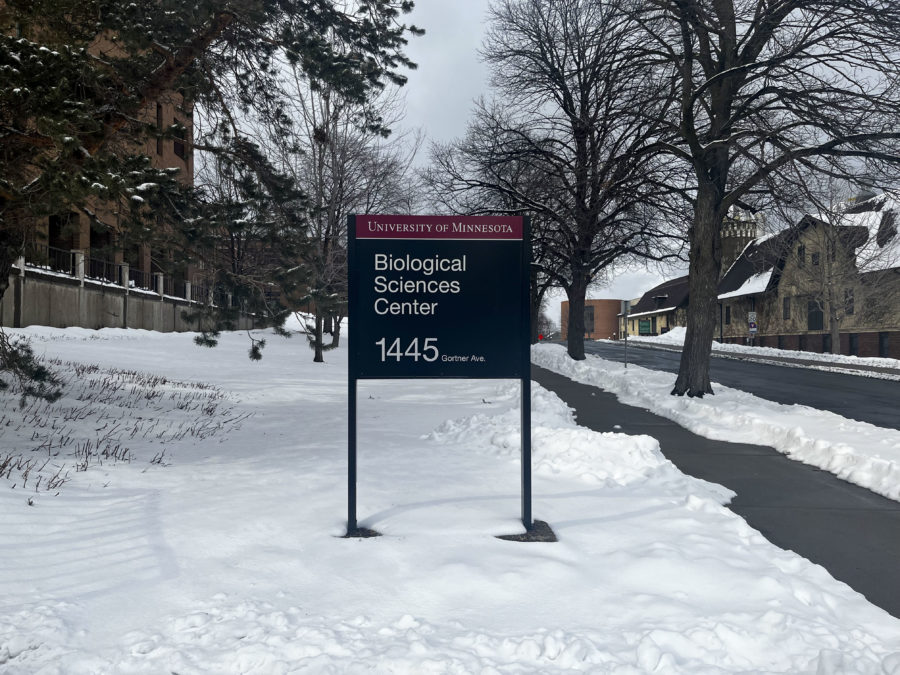Portions of the Biological Sciences Center building on the University of Minnesota St. Paul campus have been closed off to students and faculty throughout the spring semester due to initial concerns of asbestos and water damage.
A pipe burst on the building’s fifth floor earlier this semester, causing “noticeable water damage,” according to an email statement to the Minnesota Daily from Jake Ricker, director of public relations at the University. The Hazardous Materials team did a precautionary testing of the site to determine if there were any possible asbestos exposures.
According to Ricker, the Hazardous Materials team found “no elevated levels of airborne asbestos” in the Biological Sciences Center, but the areas they were testing had to be closed off until testing was complete.
At least one hallway in the building’s basement and the third-floor lounge remain closed due to the water damage, according to Ricker. The University is replacing the floor tiles in the basement and the carpet in the lounge, but he said neither closure is asbestos related.
Asbestos is a naturally occurring, fibrous-looking mineral. The most common type has been used in building construction and can be found in materials like building insulation and drywall. Asbestos exposure has been linked to various illnesses, including lung cancer and mesothelioma, according to the University’s Facilities Management website.
Thousands of products in the U.S. contain asbestos, such as ceiling tiles, floor tiles and piping insulation, Ricker said.
“With over 25 million square feet of buildings on the Twin Cities campus alone, we know products that contain asbestos are present,” Ricker said.
Because of this, the Hazardous Materials team at the University is prepared to analyze samples quickly and remove asbestos when necessary, according to Ricker.
While the pipe burst originated from the fifth floor, most of the building seemed to be affected, according to Makenna Tosi, a plant and microbial biology student at the University.
“I tried going into the basement, and I was trying to go into the study room that is down there, but that was blocked,” Tosi said. “It was all taped off, and then part of the hallway was also blocked off.”
The closures interrupted the ability for classes to meet in the building, according to Jordan Sivigny, a teaching assistant for a course taught in the building, Foundations of Biology for Biological Science Majors.
“It screwed with our class a lot the first two days because we had to close the actual teaching lab where the students work,” Sivigny said.
Despite these closures, both Sivigny and Tosi said they did not receive updates from the University in regard to the asbestos testing in the building.
“I assumed we’d get an email, but we didn’t get anything,” Tosi said. “I haven’t heard from anyone, other than word-of-mouth from other students and what I’ve seen for myself.”
More information on the Hazardous Materials Program can be found on their website. More health information regarding asbestos can be found on the Facilities Management website.














